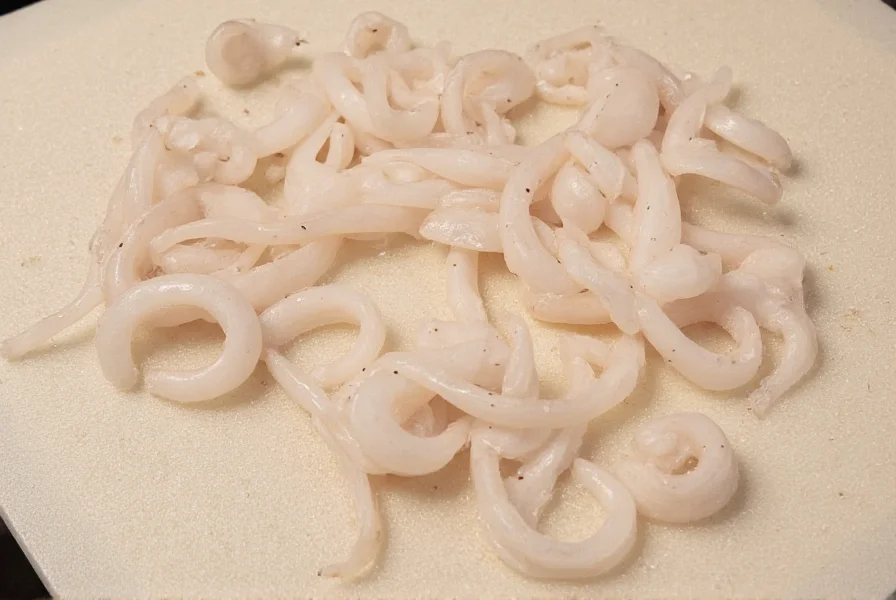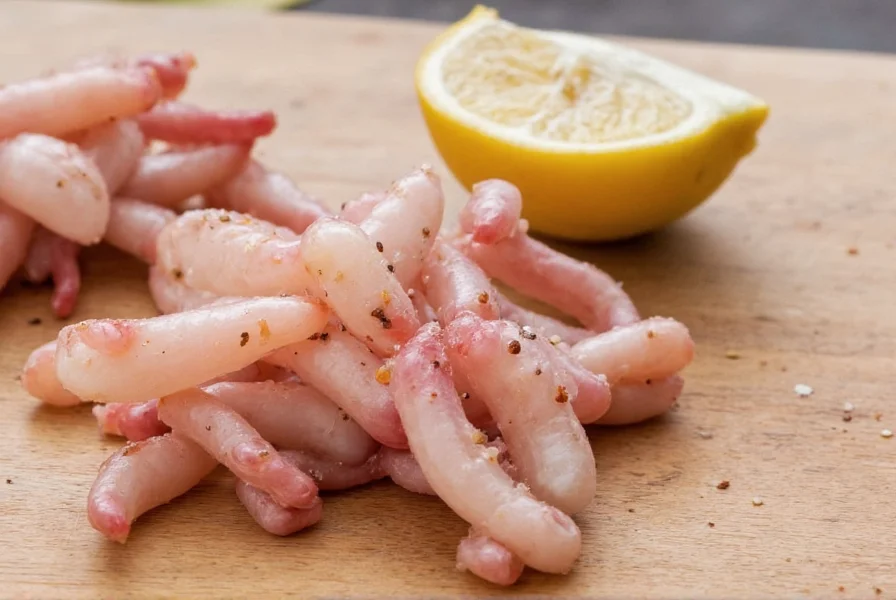The perfect way to prepare squid with salt and pepper involves cleaning fresh squid thoroughly, slicing into rings or scoring the tubes, seasoning generously with coarse sea salt and freshly ground black pepper just before cooking, and searing quickly over high heat for 1-2 minutes to maintain tenderness. Overcooking makes squid rubbery, so precise timing is essential for optimal texture and flavor.
When preparing squid with salt and pepper, many home cooks struggle with achieving that perfect tender texture while maximizing flavor. This simple seasoning combination highlights the natural sweetness of squid without overpowering it, but requires precise technique to avoid common pitfalls that lead to chewy, rubbery results.
Why Salt and Pepper Complements Squid Perfectly
Squid has a delicate, slightly sweet flavor that pairs exceptionally well with the fundamental seasoning duo of salt and pepper. The coarse texture of sea salt helps create a light crust when searing, while freshly ground black pepper adds subtle warmth without competing with the seafood's natural taste. Unlike stronger marinades that mask squid's flavor, this minimalist approach showcases quality ingredients while being incredibly versatile for various cooking methods.

Step-by-Step Preparation Guide
Follow these professional kitchen techniques for consistently tender salt and pepper squid:
1. Proper Squid Cleaning and Preparation
Start with fresh, high-quality squid. Remove the quill (transparent backbone) and innards. Peel off the purple membrane for the cleanest appearance. Rinse thoroughly under cold water. For rings, slice the tube into 1/2-inch thick pieces. For flat pieces, score the inside surface in a crosshatch pattern before cutting into serving portions. This scoring prevents curling during cooking and helps seasoning penetrate.
2. The Critical Timing of Seasoning
Never season squid too far in advance. Salt draws out moisture, which can create a watery surface that prevents proper searing. Season squid with coarse sea salt and freshly cracked black pepper immediately before cooking. This timing ensures maximum flavor without compromising texture.
| Cooking Method | Temperature | Cooking Time | Texture Indicator |
|---|---|---|---|
| Pan-searing | 400-450°F (204-232°C) | 1-2 minutes per side | Light golden edges, opaque white |
| Grilling | Medium-high heat | 2-3 minutes total | Char marks, firm but yielding |
| Deep frying | 350-375°F (177-191°C) | 1.5-2 minutes | Light golden, crisp exterior |
3. Cooking Techniques for Perfect Results
Dry the squid thoroughly with paper towels before cooking—moisture is the enemy of proper searing. Heat your pan until extremely hot before adding a high-smoke point oil like avocado or grapeseed. Place squid in a single layer without crowding. Resist the urge to move it immediately; let it develop a light crust before flipping. Total cooking time should never exceed 2-3 minutes for most methods.
Avoiding Common Squid Preparation Mistakes
Understanding squid's unique protein structure explains why certain mistakes ruin texture. Squid contains collagen that quickly contracts when heated, making it tough if cooked improperly. The two critical errors home cooks make with salt and pepper squid are:
- Overcooking - Even 30 seconds too long transforms tender squid into rubber
- Seasoning too early - Salt draws out moisture, preventing proper searing
For best results with your salt and pepper calamari recipe, cook squid either very quickly over high heat or very slowly over low heat (though the latter method works better with more complex preparations than simple salt and pepper seasoning).

Serving Suggestions and Pairings
Simple salt and pepper squid shines when served immediately after cooking. Pair with lemon wedges for brightness and a light dipping sauce like aioli or chili oil. This preparation works beautifully as:
- An appetizer with crusty bread
- A main course over arugula salad
- A component in seafood pasta dishes
- A tapas-style small plate with roasted peppers
The minimalist seasoning approach lets the quality of your squid shine through, making it perfect for showcasing fresh, sustainable seafood. When selecting squid for your salt and pepper preparation, look for firm, translucent flesh with a clean ocean smell—never fishy.
Frequently Asked Questions
How long should I cook squid with salt and pepper?
Cook squid for just 1-2 minutes total when using high-heat methods like pan-searing or grilling. The exact time depends on thickness, but squid turns opaque white and develops light golden edges when properly cooked. Overcooking by even 30 seconds makes squid rubbery, so precise timing is essential for perfect salt and pepper squid preparation.
Should I soak squid in milk before cooking with salt and pepper?
Soaking squid in milk isn't necessary for simple salt and pepper preparation. Professional chefs typically avoid this technique as it adds unnecessary steps and can dilute flavor. Proper cleaning and immediate cooking after seasoning yields better results for basic salt and pepper squid recipes. Milk soaking works better for heavily battered preparations where tenderizing is more critical.
What's the best type of salt for seasoning squid?
Coarse sea salt or kosher salt works best for squid preparation. The larger crystals create a light crust when seared and distribute more evenly than fine table salt. Avoid iodized table salt which can impart a metallic taste. For optimal salt and pepper calamari, use about 1/4 teaspoon coarse salt per pound of squid, applied immediately before cooking to prevent moisture extraction.
Can I prepare salt and pepper squid ahead of time?
No, salt and pepper squid should be cooked immediately before serving. Pre-cooking makes squid tough as it cools, and reheating rarely restores proper texture. For best results with your simple squid preparation, clean and slice squid ahead of time, but wait to season and cook until just before serving. This ensures the tender texture that makes proper salt and pepper squid so enjoyable.
Why does my salt and pepper squid turn out rubbery?
Rubbery squid typically results from overcooking or improper temperature. Squid contains collagen that contracts quickly when heated, becoming tough if cooked beyond the ideal 1-2 minute window. Using too low heat prevents proper searing and creates a chewy texture. For perfect salt and pepper calamari, ensure your pan is extremely hot and cook squid very quickly. Remember that squid continues cooking slightly from residual heat after removal from the pan.











 浙公网安备
33010002000092号
浙公网安备
33010002000092号 浙B2-20120091-4
浙B2-20120091-4